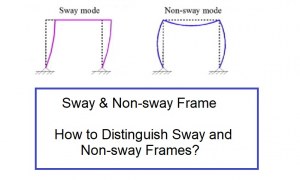🕑 Reading time: 1 minute
There different types of retaining walls and their design concept starts with calculation of earth pressures. Earth pressure calculation on retaining walls depends on the depth, pore water pressure and surcharge on retaining walls. Cantilever Retaining Walls:
(a) Cantilever retaining wall without toe projection

(b) Cantilever retaining wall with fillets
Fig: Cantilever Retaining Wall
Counterfort and Buttress Retaining Walls: If the height of the retaining wall exceeds certain limit, the cantilever walls are not economical. Economy can be achieved by providing counterforts which are nothing but vertical beams connected to the stem and the heel slab by reinforcements at regular intervals. The heel slab and the vertical stem are designed as continuous slabs instead of cantilever slabs. If the counterforts are provided in the toe side, the retaining wall is called a buttress wall.
Fig. Counterfort Retaining Wall

Fig: Buttress Retaining Wall
Surcharge on retaining walls:
A retaining wall which retains earth level upto the top of the retaining wall is a wall without surcharge. If the earth on the earth retained side is not level or the earth carries loads, the earth is said to have surcharge. The pressure exerted by the earth on the retaining wall will be more in this case. The different types of surcharges that may act on a retaining wall are illustrated in fig below.
Fig: Different Types of Surcharges on Retaining Wall
Earth Pressure on Retaining Wall:
The retained earth exerts horizontal pressure on the retaining wall, which is called the active earth pressure. The resisting pressure applied by the wall on the retained earth is called the passive earth pressure. This earth pressure varies linearly with the dept of retained earth. The pressure at a depth of H on the wall exerted by the earth is given by
Fig: Earth Pressure on Retaining Wall
If the earth has a sloping surcharge, sloping at an angle of

Fig: Earth Pressure due to inclined Backfill on Retaining wall
If the earth has a level surcharge of
Fig: Earth Pressure due to Surcharge on Retaining Wall
If the surcharge is submerged, the submerged earth pressure should be taken into account. Sufficient drainage holes are provided at different levels for the draining of water.Read More:
Construction of Concrete Block Retaining Walls with Steps Weep Holes in Retaining Walls -Types, Functions and When it is Required Types of Reinforced Concrete Retaining Wall and Their Components Principles of Retaining Wall Design

